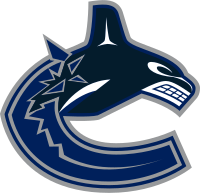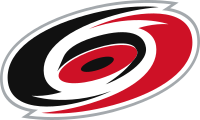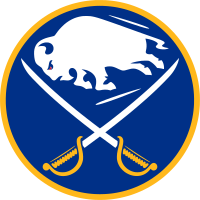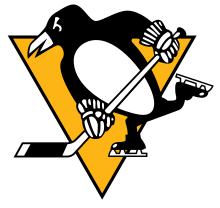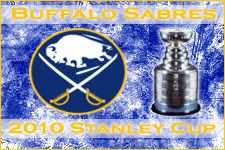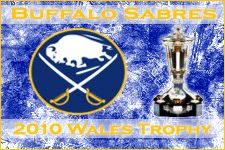Post by Tampa Bay Lightning on Feb 26, 2015 8:52:42 GMT -5
The VHL League Parity Issue, and Rule Amendment Suggestions
As the owner of the Tampa Bay Lightning in VHL, I have worked with many of you fine gentlemen in other leagues as well. Having spoken to several other GMs, there is a general feeling that there is a parity problem in the VHL, with the bottom teams worse off, even compared to the NHL.
Here are some numbers to corroborate my point:
Teams with winning percentage < .500 in VHL: 11
Teams with winning percentage <.500 in NHL: 7
Average WP% of bottom 10 teams in NHL: .447
Average WP% of bottom 10 teams in VHL: .427
However, of teams at the top 10:
WP% NHL - .667
WP% VHL - .674
However, if we change the cutoff to the top 5, the difference becomes;
NHL WP: - .687
VHL WP: - .705
The general point I’d like to get across is that the top VHL teams are better than the top NHL teams, the bottom VHL teams are worse than the bottom NHL teams, and there are more non-competitive teams in the VHL than the NHL.
Another factor we have to consider is that in the VHL, the only budget constraint is the salary cap and the salary floor. The Cap was put in place in the first place not just for cost certainty for owners, but also for parity reasons. However, many teams in the NHL do not spend to the cap because of internal budget constraints. We only have the cap and virtual money. If all the bottom-ranked teams are capable of spending to the cap in the VHL, but still perform worse than their NHL counterparts, then clearly the salary cap itself is not enough to ensure league parity.
I have proposed a list of suggestions/recommendations to the league, I sincerely hope fellow GMs take some time to read this list over and give their input. This is a great league with great people, and I believe a continuing gap in parity is detrimental to the health of the league going forward.
That being said, being the owner of a non-competitive team, I will state that I am not in favour of any measures that decrease the competitiveness of competitive teams unless there is an overwhelming popular opinion to do so. Almost all measures I have suggested are designed to increase the competitiveness and the “overall franchise value” of non-competitive teams.
Suggestion 1: Caretaker GMs
Most teams become terrible in SIM GMs not because of mis-management, but no management. The current system is that the staff will manage the team in committee, but that system is not working.
I propose a system where a specific caretaker GM is assigned to the team without a GM. The caretaker GM should be a volunteer from another conference. He cannot make deals with his own team, and all decisions must be approved by the staff. Another benefit of the caretaker GM system is to prevent the inability to make reasonable transactions.
Suggestion 2: Enlarged Prospect Pools
Prospects and draft picks are not a perfect representation of lottery tickets, but there is a probability component to them. For non-competitive teams to turn it around, they need more tickets. They also need to be given more time.
I propose a system of an enlarged prospect pool over the current 20 for non-playoff teams. If a team does not make the playoffs by the end the current VHL season, that team has its prospect limit increased to either 25, 28, or 30 (depending on what number we reach a consensus on). The increase lasts for 3 seasons. If the team makes the playoffs in 2 of the next 3 seasons, the team’s prospect limit drops back to 20.
Suggestion 3: An Additional Draft Pick
All non-playoff teams get an additional draft pick at the end of the 3rd round. So essentially, non-playoff teams pick for 4 rounds while playoff teams pick for 3. THIS PICK CANNOT BE TRADED. The player drafted cannot be traded unless he gets created.
Suggestion 4: One “enhanced” salary buyout
If a team has not made the playoffs for 2 consecutive seasons, then that teams receives one “Enhanced” buyout. Instead of the regular buyout (From the rulebook: The GM will be retaining 50% of the total contract as a CAPHIT in a buyout process.), teams using the ONE “enhanced” buyout will have a CAPHIT of 25% retained. For example, a regular buyout of a contract of 4 mil X 2 years will result in a 2 mil retained cap hit for 2 years, however, teams using the enhanced buyout will carry a cap hit of 1 mil for 2 years. Players are only eligible for an enhanced buyout if that player has played 82 games for the team. The purpose of this rule proposal is to assist non-competitive teams to clean up their rosters, not to take on a bad contract of another team to use the buyout from.
Suggestion 5: None from me
Again, I believe the league must assist in the non-competitive teams in becoming better and enhancing their overall franchise value. The measures I have proposed do so in a gentle manner, and do not detract from the value or competitiveness of existing competitive teams.
As the owner of the Tampa Bay Lightning in VHL, I have worked with many of you fine gentlemen in other leagues as well. Having spoken to several other GMs, there is a general feeling that there is a parity problem in the VHL, with the bottom teams worse off, even compared to the NHL.
Here are some numbers to corroborate my point:
Teams with winning percentage < .500 in VHL: 11
Teams with winning percentage <.500 in NHL: 7
Average WP% of bottom 10 teams in NHL: .447
Average WP% of bottom 10 teams in VHL: .427
However, of teams at the top 10:
WP% NHL - .667
WP% VHL - .674
However, if we change the cutoff to the top 5, the difference becomes;
NHL WP: - .687
VHL WP: - .705
The general point I’d like to get across is that the top VHL teams are better than the top NHL teams, the bottom VHL teams are worse than the bottom NHL teams, and there are more non-competitive teams in the VHL than the NHL.
Another factor we have to consider is that in the VHL, the only budget constraint is the salary cap and the salary floor. The Cap was put in place in the first place not just for cost certainty for owners, but also for parity reasons. However, many teams in the NHL do not spend to the cap because of internal budget constraints. We only have the cap and virtual money. If all the bottom-ranked teams are capable of spending to the cap in the VHL, but still perform worse than their NHL counterparts, then clearly the salary cap itself is not enough to ensure league parity.
I have proposed a list of suggestions/recommendations to the league, I sincerely hope fellow GMs take some time to read this list over and give their input. This is a great league with great people, and I believe a continuing gap in parity is detrimental to the health of the league going forward.
That being said, being the owner of a non-competitive team, I will state that I am not in favour of any measures that decrease the competitiveness of competitive teams unless there is an overwhelming popular opinion to do so. Almost all measures I have suggested are designed to increase the competitiveness and the “overall franchise value” of non-competitive teams.
Suggestion 1: Caretaker GMs
Most teams become terrible in SIM GMs not because of mis-management, but no management. The current system is that the staff will manage the team in committee, but that system is not working.
I propose a system where a specific caretaker GM is assigned to the team without a GM. The caretaker GM should be a volunteer from another conference. He cannot make deals with his own team, and all decisions must be approved by the staff. Another benefit of the caretaker GM system is to prevent the inability to make reasonable transactions.
Suggestion 2: Enlarged Prospect Pools
Prospects and draft picks are not a perfect representation of lottery tickets, but there is a probability component to them. For non-competitive teams to turn it around, they need more tickets. They also need to be given more time.
I propose a system of an enlarged prospect pool over the current 20 for non-playoff teams. If a team does not make the playoffs by the end the current VHL season, that team has its prospect limit increased to either 25, 28, or 30 (depending on what number we reach a consensus on). The increase lasts for 3 seasons. If the team makes the playoffs in 2 of the next 3 seasons, the team’s prospect limit drops back to 20.
Suggestion 3: An Additional Draft Pick
All non-playoff teams get an additional draft pick at the end of the 3rd round. So essentially, non-playoff teams pick for 4 rounds while playoff teams pick for 3. THIS PICK CANNOT BE TRADED. The player drafted cannot be traded unless he gets created.
Suggestion 4: One “enhanced” salary buyout
If a team has not made the playoffs for 2 consecutive seasons, then that teams receives one “Enhanced” buyout. Instead of the regular buyout (From the rulebook: The GM will be retaining 50% of the total contract as a CAPHIT in a buyout process.), teams using the ONE “enhanced” buyout will have a CAPHIT of 25% retained. For example, a regular buyout of a contract of 4 mil X 2 years will result in a 2 mil retained cap hit for 2 years, however, teams using the enhanced buyout will carry a cap hit of 1 mil for 2 years. Players are only eligible for an enhanced buyout if that player has played 82 games for the team. The purpose of this rule proposal is to assist non-competitive teams to clean up their rosters, not to take on a bad contract of another team to use the buyout from.
Suggestion 5: None from me
Again, I believe the league must assist in the non-competitive teams in becoming better and enhancing their overall franchise value. The measures I have proposed do so in a gentle manner, and do not detract from the value or competitiveness of existing competitive teams.






